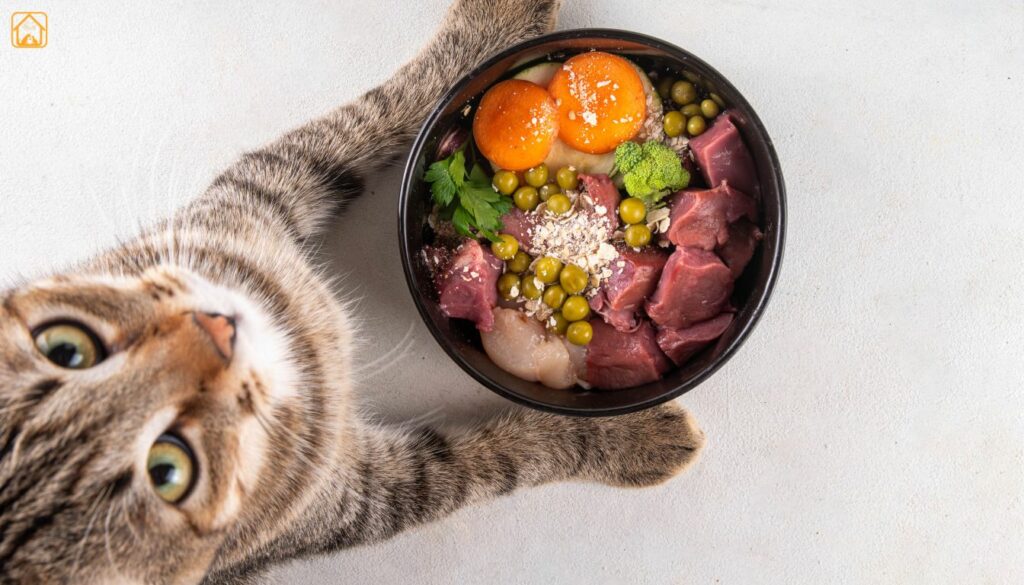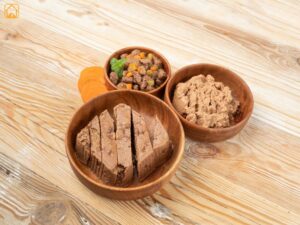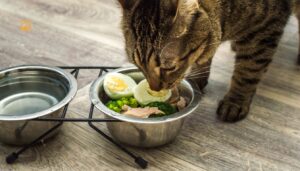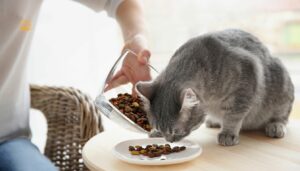Why Proper Nutrition is Critical for Kittens’ Growth
Growing kittens are like little athletes, their bodies work overtime, doubling or even tripling in weight during the first few weeks. Without the right nutrition, they can’t build strong bones, sharp minds, or fluffy coats. Proper kitten nutrition supports:
- Rapid muscle and bone growth
- Brain and vision development
- Building a strong immune system
- Healthy skin and a shiny coat
Ever seen a kitten bounce from nap to zoomies in seconds? That takes a lot of fuel! If kittens don’t get enough of the right nutrients, they can fall behind in growth or even become sick. I’ve seen kittens transform with just a few weeks of balanced feeding, suddenly, they’re brighter and more playful. In short, what you put in their bowl shapes their lifelong health.
Kitten Nutritional Requirements: Key Nutrients & Percentages
Kittens aren’t just “small cats”, their nutritional needs are in a league of their own. The most important building blocks for kittens include:
Essential Nutrients for Kittens
- Protein: Vital for muscle and organ development. Kittens need about 30-40% of calories from protein (higher than adult cats).
- Fat: Provides energy and helps absorb fat-soluble vitamins. Aim for 18-35% fat in kitten diets.
- Calcium & Phosphorus: Crucial for bone and teeth growth, must be balanced (typically 1.0-1.5% calcium, 0.8-1.2% phosphorus).
- Vitamins: Especially A, D, E, and B-complex for growth and immune strength.
- Taurine & Arginine: Essential amino acids that kittens can’t make on their own; critical for heart, eye, and immune health.
- Omega-3 Fatty Acids (DHA, EPA): For brain and eye development.
Kitten Nutrition Chart (Typical Requirements)
| Nutrient | Recommended % (Dry Matter Basis) |
| Protein | 30-40% |
| Fat | 18-35% |
| Calcium | 1.0-1.5% |
| Phosphorus | 0.8-1.2% |
| Taurine | 0.1% minimum |
Honestly, reading labels can be confusing. If you spot “complete and balanced” for growth or kittens as per AAFCO, you’re on the right track. People often confuse Kitten food with cat food, even I did. Always double-check the packaging for the right life stage and nutrient balance.
Kitten Feeding Guide by Age (Feeding Chart)
Feeding a kitten the right way at each stage is key to healthy growth and strong development. From milk to solids, their needs change fast in the first few months. This simple kitten feeding guide by age will help you know what to feed, how much, and when.
| Kitten Age | Typical Weight | Calories/Day | Meals/Day |
| 0-4 weeks | 0.5-1 lb | Mother’s milk or milk replacer | Every 2-4 hrs |
| 4-8 weeks | 1-2 lbs | 100-150 | 4-5 |
| 8-12 weeks | 2-3 lbs | 150-200 | 4 |
| 3 months | 3-4 lbs | 200-250 | 3-4 |
| 4-6 months | 4-6 lbs | 250-350 | 3 |
| 6-12 months | 6-10 lbs | 350-500 | 2-3 |
Use this kitten feeding chart as a starting point, but remember that every kitten is unique. Some gobble up their food, others graze. When my tabby was three months old, I had to portion his meals or he’d eat everyone’s share. Adjust as needed and always watch their body condition.
Wet vs. Dry Kitten Food: Pros, Cons, and Recommendations
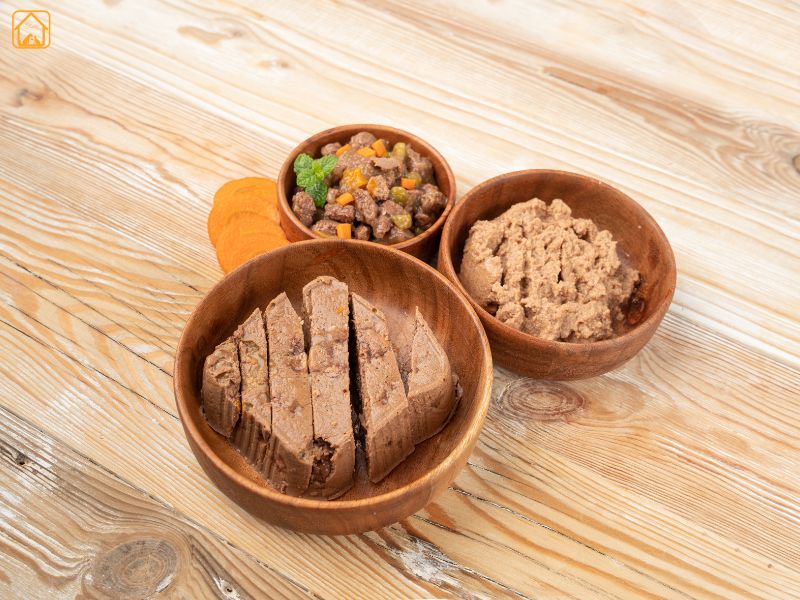
Choosing between wet and dry kitten food is like picking between chocolate and vanilla, both have their fans! Here’s what to keep in mind:
- Wet Kitten Food
- Higher moisture (great for hydration, especially for young kittens)
- Softer texture, easier for tiny teeth
- Often more palatable (picky eaters love it)
- Can be messier and more expensive
- Dry Kitten Food
- Convenient and easy to store
- Supports dental health (gentle crunch)
- Usually higher in calories per cup
- Lower moisture, always offer plenty of water
Most vets and many experienced cat parents recommend a mix of both. Wet food for hydration and flavor, dry food for convenience. My kittens always got a little of both, kept their taste buds happy and their bellies full.
How Much & How Often Should You Feed Your Kitten?
Kitten food requirements aren’t just about what’s in the bowl, but how often you fill it. Most kittens eat small, frequent meals. Here’s a quick breakdown:
- Under 4 months: Offer 4 meals a day, or let them graze with free-choice feeding.
- 4 to 6 months: Feed 3–4 times a day as their tummy gets bigger and appetite more stable.
- 6 to 12 months: Transition to 2–3 meals a day, getting closer to an adult routine.
Wondering how much to feed a 3-month-old kitten? Start with the packaging guidelines, but adjust based on your kitten’s body condition. Most need around 200–250 calories per day, divided into 3–4 meals. Watch for signs of hunger before growth spurts, it’s normal. Just keep portions balanced, and if your kitten starts gaining or losing weight too fast, a quick vet check is always a good idea.
Kitten Food Quality: How to Choose the Best Commercial or Homemade Diet
With so many brands on the shelf, picking the best food for kittens can feel overwhelming. Stick with these tips for a healthy choice:
- Look for “complete and balanced” kitten food, approved by AAFCO for growth
- Check that protein is a top ingredient (named meats, not by-products)
- Trust reputable brands that conduct feeding trials
- Avoid generic or unverified store brands
If you’re considering homemade kitten food, talk to a vet nutritionist. Homemade recipes can lack calcium, taurine, or other essentials if not properly balanced. I tried making a homemade diet once, turns out, kittens are picky and need expert-approved recipes. For most pet parents, commercial options are safer and easier.
Kitten Milk Replacers, Supplements & Special Considerations
Orphaned or very young kittens (under 4 weeks) can’t digest cow’s milk, so human milk or grocery store milk is a no-go. Use a kitten milk replacer (like KMR), which mimics mom’s milk nutrition. Follow label instructions and warm the formula gently, just like mom would.
Supplements aren’t usually needed with a balanced diet. But if your vet spots a kitten nutrient deficiency or your kitten has special needs, they may recommend a kitten nutrition supplement. Always check with a vet before adding anything new. One time, I learned the hard way that too many vitamins can do more harm than good.
Transitioning Diets: Weaning, Switching Foods, and Avoiding Stomach Upset
Weaning kittens from milk to solid food usually begins around 4 to 5 weeks of age and the transition needs to be gentle.. Start by mixing wet kitten food with a little kitten formula to make a soft, soupy mix. As their teeth and appetite develop, slowly thicken the mixture over the next two weeks until they’re eating mostly solid food.
If you’re planning to change the brand or type of food, make the switch slowly. Blend the old and new food together over 5 to 7 days to avoid tummy troubles. A sudden change can lead to diarrhea or refusal to eat. I once rushed the process and spent days cleaning up. A little patience keeps your kitten happy and healthy.
Common Kitten Nutrition Mistakes and How to Avoid Them
Feeding a kitten might seem simple, but a few common mistakes can impact their health if not caught early. Some of them are:
- Feeding adult cat food: Lacks the right protein, fat, and nutrients for kittens’ rapid growth.
- Giving cow’s milk: Causes diarrhea and digestive upset.
- Overfeeding treats or scraps: Shouldn’t exceed 10% of calories; avoid onions, garlic, chocolate, and grapes, these are toxic!
- Not providing fresh water: Even if feeding wet food, clean water is a must.
- Skipping vet check-ins: Regular weight checks help catch kitten nutrition issues early.
Honestly, most mistakes are easy to fix once you spot them. If your kitten’s not thriving or you’re worried about what to feed kittens, get advice early. Better safe than sorry.
FAQs: Kitten Nutrition
What are the essential nutrients for kittens?
Protein, fat, taurine, calcium, phosphorus, omega-3s, and vitamins A, D, E, and B are all crucial for kitten growth and health.
How much should I feed my 3-month-old kitten?
Most 3-month-old kittens need 200-250 calories per day, split into 3-4 meals. Adjust amounts based on your kitten’s weight and activity level.
Is wet or dry food better for kittens?
Both have benefits! Wet food boosts hydration and is easier for small kittens, while dry food is convenient and helps dental health. Many experts recommend offering both.
Can I feed my kitten homemade food?
Homemade diets can work if designed by a veterinary nutritionist, but they’re tricky. Commercial kitten food is usually safer and easier for most pet parents.
What foods should kittens avoid?
Kittens should never eat onions, garlic, chocolate, grapes, or cow’s milk. Avoid dog food and human junk food, too.
How do I know if my kitten has a nutrition deficiency?
Watch for poor growth, dull coat, lethargy, or digestive issues. If you notice any of these, talk to your vet right away.
When can kittens start eating adult cat food?
Kittens can transition to adult cat food at about 12 months old, or when advised by your vet.
Conclusion
Giving your kitten the right nutrition sets the foundation for a healthy, happy life. From choosing the right food to feeding the right amount, every step matters. With love, patience, and good guidance, you’ll raise a strong, playful companion who grows into a thriving adult cat full of personality.
